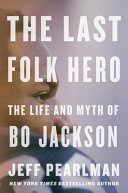Take me out to the Ball Game
-

If These Walls Could Talk: New York Mets
Mike Puma of the New York Post provides insight into the team's inner sanctum as only he can
The New York Mets are one of the most historic teams in Major League Baseball, with superstars over the years including Jacob deGrom, Mike Piazza, David Wright, and Tom Seaver. Aided by dozens of new, exclusive interviews, readers will gain the perspective of players, coaches, and personnel from Mets history in moments of greatness as well as defeat, making for a keepsake no fan will want to miss.
Few fan bases display as much rabid devotion to their team as the New York Mets', win or lose. That spirit is celebrated in this colorful collection of stories about the Lovable Losers.
The If These Walls Could Talk series is a one-of-a-kind, insider's look into the great moments, the lowlights, and everything in between in your team's history. Other New York titles include:
-
If These Walls Could Talk: New York Giants
-
If These Walls Could Talk: New York Yankees
-
If These Walls Could Talk: New York Jets
-
-

The Last Folk Hero
New York Times Bestseller * The ultimate gift for sports lovers
By the author of Showtime--the source for HBO's Winning Time--the definitive biography of mythic multi-sport star Bo Jackson.
"A legendary tome on a legendary athlete." --Chris Herring, author of Blood in the Garden
From the mid-1980s into the early 1990s, the greatest athlete of all time streaked across American sports and popular culture. Stadiums struggled to contain him. Clocks failed to capture his speed. His strength was legendary. His power unmatched. Video game makers turned him into an invincible character--and they were dead-on. He climbed (and walked across) walls, splintered baseball bats over his knee, turned oncoming tacklers into ground meat. He became the first person to simultaneously star in two major professional sports, and overtook Michael Jordan as America's most recognizable pitchman. He was on our televisions, in our magazines, plastered across billboards. He was half man, half myth.
Then, almost overnight, he was gone.
He was Bo Jackson.
Drawing on an astonishing 720 original interviews, New York Times bestselling sportswriter Jeff Pearlman captures as never before the elusive truth about Jackson, Auburn University's transcendent Heisman Trophy winner, superstar of both the NFL and Major League Baseball and ubiquitous "Bo Knows" Nike pitchman. Did Bo really jump over a parked Volkswagen? (Yes.) Did he actually run a 4.13 40? (Yes.) During the 1991 flight that nearly killed every member of the Chicago White Sox, was he in the cockpit trying to help? (Oddly, yes. Or no. Or ... maybe.)
Bo Jackson isn't Jim Thorpe.
He's not Deion Sanders, either.
No, Bo Jackson is Paul Bunyan.
The Last Folk Hero is the true tale of Bo Jackson that only "master storyteller" (NPR.org) Jeff Pearlman could tell.
-

The Church of Baseball
From the award-winning screenwriter and director of cult classic Bull Durham, the extremely entertaining behind-the-scenes story of the making of the film, and an insightful primer on the art and business of moviemaking.
“This book tells you how to make a movie—the whole nine innings of it—out of nothing but sheer will.” —Tony Gilroy, writer/director of Michael Clayton and The Bourne Legacy
“The only church that truly feeds the soul, day in, day out, is the church of baseball.” —Annie in Bull Durham
Bull Durham, the breakthrough 1988 film about a minor league baseball team, is widely revered as the best sports movie of all time. But back in 1987, Ron Shelton was a first-time director and no one was willing to finance a movie about baseball—especially a story set in the minors. The jury was still out on Kevin Costner’s leading-man potential, while Susan Sarandon was already a has-been. There were doubts. But something miraculous happened, and The Church of Baseball attempts to capture why.
From organizing a baseball camp for the actors and rewriting key scenes while on set, to dealing with a short production schedule and overcoming the challenge of filming the sport, Shelton brings to life the making of this beloved American movie. Shelton explains the rarely revealed ins and outs of moviemaking, from a film’s inception and financing, screenwriting, casting, the nuts and bolts of directing, the postproduction process, and even through its release. But this is also a book about baseball and its singular romance in the world of sports. Shelton spent six years in the minor leagues before making this film, and his experiences resonate throughout this book.
Full of wry humor and insight, The Church of Baseball tells the remarkable story behind an iconic film. -

Swing and a Hit
INSTANT NEW YORK TIMES BESTSELLER!
The fun and fiery memoir of All Star Yankee and five-time World Champion, Paul O'Neill.
In SWING AND A HIT, O'Neill elaborates on his most important hitting principles, lessons, and memories--exploring those elements across ten chapters (to align with the nine innings of a baseball game and one extra inning). Here, O'Neill, with his intense temperament, describes what he did as a hitter, how he adjusted to pitchers, how he boosted his confidence, how he battled with umpires (and water coolers), and what advice he would give to current hitters.
O'Neill has always been a tough out at the plate. Recalling how he started to swing at bat as a two-year-old and kept swinging it professionally until he was thirty-eight, O'Neill provides constant insights into the beauty and frustration of playing baseball. The legendary Ted Williams said using a round bat to hit a round ball is the most difficult thing to do in sports. Naturally, O'Neill, who once received a surprise call from Williams that was filled with hitting advice, agrees.
SWING AND A HIT features O'Neill's most thoughtful revelations and offers clubhouse stories from some of the biggest names in Major League Baseball--hitters, managers, and teammates like Joe Torre, Derek Jeter, Don Mattingly, Pete Rose, and Bernie Williams.
Remember, O'Neill, ever the perfectionist, was the type of hitter who believed that pitchers didn't ever get him out. For that incredible reason and so many others, SWING AND A HIT is essential reading for any baseball fan.
-

Whispers of the Gods
"Anyone who has love for the game of baseball will enjoy this remarkable book." Library Journal, Starred Review In Whispers of the Gods, bestselling author Peter Golenbock brings to life baseball greats from the 1940s, 1950s, and 1960s through timeless stories told straight from the players themselves. Like the enduring classic The Glory of Their Times, this book features the reminiscences of baseball legends, pulled from hundreds of hours of taped interviews with the author. Roy Campanella talks about life in the Negro Leagues before coming up to the Brooklyn Dodgers. Ted Williams recounts why he believes Shoeless Joe Jackson belongs in the Hall of Fame. Tom Sturdivant provides vivid memories of Casey Stengel, Mickey Mantle, and other Yankee icons. Other voices include Phil Rizzuto, Jim Bouton, Monte Irvin, Stan Musial, Ron Santo, Rex Barney, Ellis Clary, Roger Maris, Ed Froelich, Marty Marion, Jim Brosnan, Gene Conley, and Kirby Higbe. The players interviewed were All-Stars, Hall of Famers, and heroes to many, and their impact on the national pastime is still seen to this day. Baseball history comes alive through the stories shared in Whispers of the Gods, offering a fascinating account of the golden age of baseball.
-
Double Play
Robert B. Parker fans have been quick to embrace each addition to his remarkable canon, from the legendary Spenser series to the novels featuring Jesse Stone and Sunny Randall. And his occasional forays into the past-Gunman's Rhapsody, a fresh take on Wyatt Earp, and Poodle Springs, based on a Raymond Chandler story-have dazzled critics and confirmed his place among the greatest writers of this century. With "Double Play," he presents us with a book he was literally born to write.
It is 1947, the year Jackie Robinson breaks major-league baseball's color barrier by playing for the Brooklyn Dodgers-and changes the world. This is the story of that season, as told through the eyes of a difficult, brooding, and wounded man named Joseph Burke. Burke, a veteran of World War II and a survivor of Guadalcanal, is hired by Brooklyn Dodgers manager Branch Rickey to guard Robinson. While Burke shadows Robinson, a man of tremendous strength and character suddenly thrust into the media spotlight, the bodyguard must also face some hard truths of his own, in a world where the wrong associations can prove fatal.
A brilliant novel about a very real man, "Double Play" is a triumph: ingeniously crafted, rich with period detail, and re-sounding with the themes familiar to Parker's readers-honor, duty, responsibility, and redemption.







